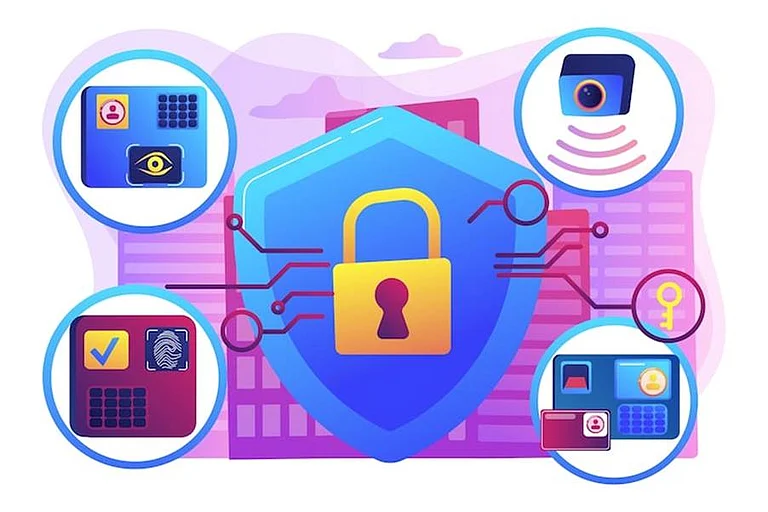You have antivirus software installed. You run regular scans. You think your computer is secure, so your crypto must be secure too, right?
This is a dangerous and costly misconception.
Antivirus software is like a security guard for your house. It's designed to stop known intruders from breaking in. But your crypto isn't in your house; it's on the blockchain. Your computer only holds the key to that crypto.
The biggest threats in the crypto world aren't designed to infect your computer; they're designed to trick you into handing over that key. And a security guard is useless if you willingly open the door to a scammer. This guide will explain why your antivirus is an incomplete shield and what you need to do to build a real fortress around your digital assets.
The Two Critical Blind Spots of Antivirus Software
1. The Technical Gap: It's Fighting the Last War
Antivirus programs are excellent at identifying well-known viruses that have been seen before. However, crypto malware is a different beast:
It's Too New: Hackers create new crypto-stealing malware daily. By the time your antivirus provider identifies it and sends an update, it's often too late.
It's Too Stealthy: Modern crypto malware is "fileless." It runs directly in your computer's memory, leaving no tracks for a traditional antivirus to scan. It can also disguise itself as a legitimate process, making it invisible to behavioral detection.
2. The Human Gap: It Can't Protect You From Yourself
This is the single biggest reason antivirus is not enough. Your greatest vulnerability is not your software; it's your own actions. Antivirus offers zero protection against the most common crypto attack vectors:
Phishing Scams: If a fake email tricks you into visiting a cloned website and you type in your seed phrase, your antivirus is powerless to stop you.
Social Engineering: If a scammer in a Discord server convinces you to give them remote access to your computer to "fix a problem," your antivirus will not intervene.
The Modern Crypto Security Playbook: A Multi-Layered Defense
True crypto security isn't about one tool; it's about building layers of defense that protect your keys.
Layer 1: The Foundation - A Hardware Wallet
This is the single most important step. A hardware wallet (from brands like Ledger or Trezor) stores your private keys on a secure, offline device.
Why it works: Even if your computer is riddled with malware, the keys never touch the internet. Transactions are signed on the device itself, making it immune to online hacking. This isolates your most valuable asset - your key, from the most dangerous environment i.e. your computer.
Layer 2: The Access Control - Multi-Factor Authentication (MFA)
For every exchange account you use, enable MFA, preferably with an authenticator app (not SMS). This ensures that even if a hacker steals your password, they cannot log in without physical access to your phone.
Layer 3: The Digital Hygiene - Your Habits
This layer is about your own vigilance:
Be Skeptical: Treat every email, direct message, and link as a potential threat. Verify URLs before clicking.
Keep Software Updated: Regularly update your operating system, browser, and wallet software to patch security vulnerabilities.
Secure Your Seed Phrase Offline: Your master recovery phrase should be written on paper or stamped in metal and stored in a secure, offline location. Never, ever store it on your computer or in a cloud service.
Comparative Table: Antivirus vs. Comprehensive Crypto Protection
Feature | Antivirus Software | Comprehensive Crypto Protection |
Signature-Based Detection | Yes | Limited |
Behavioral Detection | Yes | Yes |
Protection Against Phishing | No | Yes |
Protection Against Malware | Yes | Yes |
Protection Against Human Error | No | Yes |
Conclusion
Antivirus software remains an important tool for general digital security, but it is not sufficient for protecting cryptocurrency assets. The unique risks faced by crypto users—ranging from stealth malware to phishing attacks—require a multi-layered security approach. Tools like hardware wallets, multi-factor authentication, anti-malware software, regular updates, and safe online practices collectively provide far greater protection than antivirus alone.
As cryptocurrency adoption grows, understanding these vulnerabilities and implementing comprehensive security measures is crucial. By combining technology, caution, and good habits, crypto users can minimize risk and enjoy the benefits of digital assets safely.
FAQs
Q1: Can antivirus software detect all crypto malware?
No. Antivirus software mainly detects known malware signatures and may not recognize new, modified, or fileless crypto threats.
Q2: Are hardware wallets 100% safe?
Hardware wallets provide strong protection but must be handled correctly. Physical loss or theft of the device can compromise security.
Q3: How can I prevent phishing attacks targeting crypto?
Always verify sender information, avoid clicking suspicious links, and confirm website authenticity before entering any credentials.
Q4: Should I use both antivirus and anti-malware programs?
Yes, layered protection ensures better coverage against a wider range of threats.
Q5: What should I do if my crypto wallet is compromised?
Immediately transfer funds to a secure wallet, change all passwords, and report the incident to relevant authorities or exchanges.

























